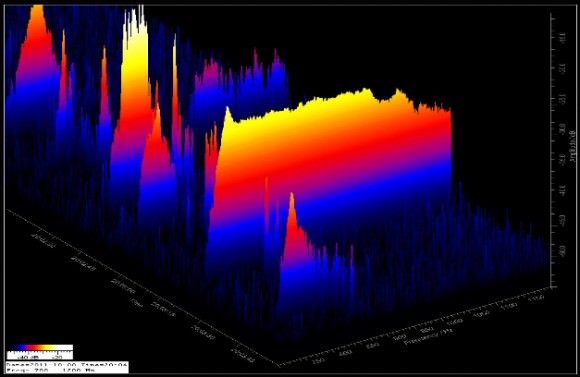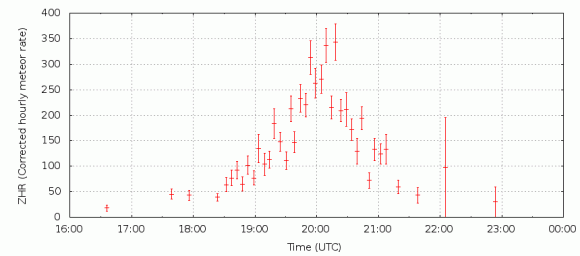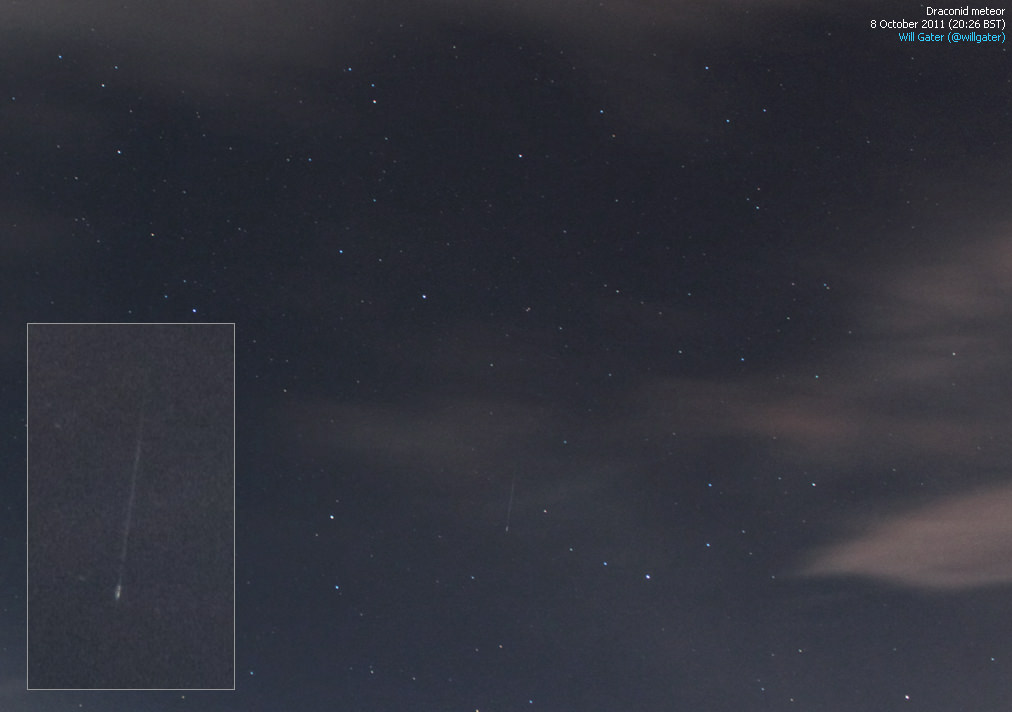[/caption]
After weeks of speculation of its intensity, the Draconid/Giacobond meteor shower finally arrived. Some astronomers predicted that this normally quiet meteor shower would deliver up to 1000 meteors per hour at its peak – Were they right?
At approximately 20:00 BST (21:00 UT) on October 8th 2011 the shower started in earnest and many in the UK and Europe looked forward to an evening of meteor watching.
Unfortunately, many people were under thick clouds and missed the display, but there were a few places where the clouds cleared and observers were treated to a memorable spectacle.
I have done many meteorwatch evenings in the past, but this one got exciting very quickly and the uncertainty of the amount of meteors was soon doused.
Many people including myself were popping outside and trying to glimpse meteors through the clouds, but most of the time the Meteorwatch Meteor Live View was being used.
Everything was fairly sedate apart from us all moaning about the weather, but then all of a sudden at approximately 20:30 BST (19:30 UT) The Meteor Live View app on the Meteorwatch website went crazy!

Many people started to get good breaks in the clouds including myself and there were reports of dozens of meteors in just a few short minutes, much to the envy and disappointment of those still clouded over.
At this time the International Meteor Organisation (IMO) reported observations of just over 300 meteors per hour (319 ZHR).
The evening continued and to everybody’s delight (to those who could see meteors), there were many. I saw 3 within a couple of seconds and this continued for about an hour.
Eventually rates started to decline, people saw less and the Meteor Live View started to show less activity.
At approximately 22:00 BST (21:00 UT) meteor activity dropped substantially – The show was over!
The IMO results were posted on their website with rates of just under 350 meteors per hour at the peak of the shower, reported by their observing stations.

Did the Dracondids/ Giacobonids live up to expectations in the end? I would say yes, a fairly heavy meteor shower, maybe it could be called a mini storm!


oTay then, the predicted stream was a ‘keeper’! (For you anyway) Here, on the coast of middle Californicator (Ahem – 75 miles north of San Francisco) bright moonlight, then fog, kept me from seeing any meteors… Try as I might = an hour+ of viewing – at least until the fog rolled in making it useless, I saw not a drop~ Well, oh well.. hopefully the Leonid shower, in mid November, will make up for this drought?
Hardhat in hand.. and anxiously awaiting…….* ~@; )
Here in Northern Australia (Gove NT) we met for a beach party to see how many Draconids we could see rising from the northern Horizon. Over the course of the evening of the 8th of Oct we saw aprox 6n confirmed draconids, not many, but it was a great “International Observe the moon day” Beach party for Gove Amateur Astronomers.
We here in Turku Finland (southern Finland) we saw in two hours (20:oo – 22:00 UTC) aprox. 20 shooting stars. But to our surprise we started to have northern lights and it saved our night! you can see our draconids meteor astrophotos at this site: http://linksthroughspace.blogspot.com/
We manage to capture 5 shooting star with 2 cameras and i mini time lapse of the northern lights 😀
Tapani and Janne
Moonlight and high altitude clouds obscured the shower for me. I rarely have good luck with meteor showers. But most clear nights, I see at least one by chance, so I guess it evens out.
And yes, I have heard whistling meteors before.